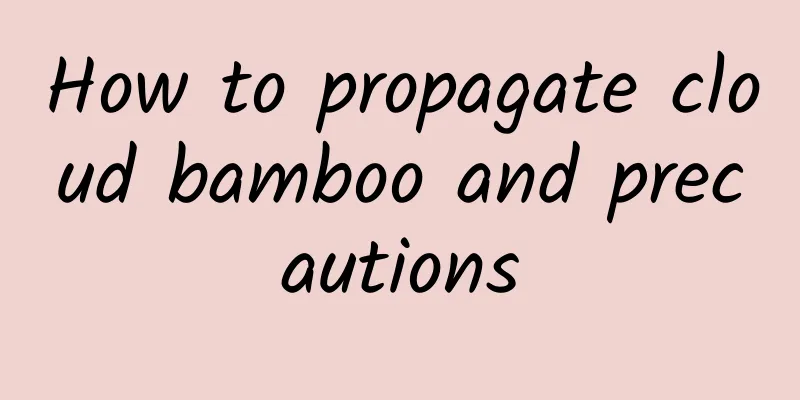Key points for wheat field management in January

|
There are two solar terms in January, Minor Cold and Major Cold, when the temperature is low. Special attention should be paid to the local occurrence of severe low-temperature rain and snow. All localities should pay close attention to weather forecasts, actively respond to extreme weather, and strengthen wheat management. Here are the key points of wheat field management in January. 1. Timely clearing of ditches, soil leveling, drainage and waterlogging Before the festival, manpower should be organized in time to clear ditches and till fields to keep them unobstructed, especially to clear and dredge the ditches outside the fields to ensure that the fields are dry and drainage is unobstructed after the rain stops, and to effectively prevent serious waterlogging caused by continuous rain and snow in winter and spring. 2. Appropriate suppression and chemical control to inhibit vigorous growth Before wheat joints, for vigorous growth wheat with a large number of tillers and vigorous growth, chemical control or suppression measures should be taken in time to control the vigorous growth. Pressing should be carried out when there is no frost or dew, and it is sunny and the temperature rises after a cold end and a warm start. The soil moisture condition should be appropriate (the topsoil is dry). Avoid pressing when the soil is humid or before a cold wave arrives. It is necessary to prevent excessive suppression and determine the appropriate suppression intensity according to the growth degree of the wheat seedlings. You can also choose chemical control agents such as paclobutrazol for moderate chemical control and spray them on the leaves. 3. Strictly control the use of fertilizer to prevent the group from being too large If the base fertilizer is insufficient, and there are not enough seedlings and not many tillers, you can apply less fertilizer , mainly to catch the yellow pond and promote balance. Generally, fertilization is not recommended under normal circumstances, because applying fertilizer at this time will cause the population to be too large, greatly increase ineffective tillers, and increase the risk of lodging in the later stage. 4. Pay attention to the occurrence of frost damage and take remedial measures in time For wheat fields where only the leaf tips are frozen, normal management can be carried out without taking special measures. For wheat fields where more than 1/2 of the leaves are frozen, or where 20%-30% of the main stem and large tillering ears are frozen to death, apply 5-7 kg of urea per mu as recovery fertilizer; for wheat fields where the above-ground leaves are completely frozen to death but the tillering nodes are normal, or where 30%-50% of the main stem and large tillering ears are frozen to death, apply 8-10 kg of urea as recovery fertilizer; for wheat fields where the late-sown weak seedlings with insufficient application of basal fertilizer or where the seedlings are severely waterlogged and dead, apply about 15 kg of triple compound fertilizer in time to promote the transformation of the seedling condition. 5. Take early measures to prevent and control pests and diseases Depending on the specific situation, a combination of manual weeding, inter-row weeding and chemical weeding can be used. Strengthen the monitoring of pests and diseases and weeds , carry out pesticide control in a timely manner, and reduce the number of overwintering pests and diseases. That’s it |
<<: Will gardenia die if watered too much? How to water gardenia normally?
>>: Gardenia cuttings steps, Gardenia cuttings time
Recommend
Why is the crabapple flower unlucky?
1. Origin of the name A long time ago, there was ...
The 4 most suitable plants for cuttings now, they can bloom out of the pot by pinching a branch, it is difficult to keep them alive
Rubber tree cuttings Rubber tree cuttings can be ...
How to Propagate Grape Hyacinth
Seed propagation The most common method of propag...
Common diseases and pests of tea and their control methods
Powdery mildew symptom In the early stage of the ...
When is the best time to sow orchids?
The right time to plant orchids Orchids belong to...
Why do longevity plum leaves turn yellow and fall off?
1. Strong light Reason: Kalanchoe is suitable for...
It is best to water roses every few days
How often should roses be watered? When growing r...
Environmental conditions and characteristics of mung bean growth
Environmental conditions and requirements for the...
Is the plant that likes shade or sunlight?
Lover's Tears: Do You Prefer Yin or Yang? Lov...
What are the varieties of colorful peppers?
Chaotian The fruit is upward, round, conical or c...
How to prune the roots of lucky bamboo
1. Root pruning method When growing lucky bamboo ...
Is hyacinth harmful to the human body? Is it suitable for indoor cultivation?
1. Is it harmful? As long as it is normally maint...
How much does longan cost per pound?
1. Price It is one of the most popular fruits, us...
Gardenia, rose, azalea... they die every time I grow them? Learn this 1 trick and keep it open for 3 months!
Gardenia has buds but no flowers Many flower love...
How to raise the Queen of the Cliff
1. Soil The Queen of the Cliff originally grew in...









